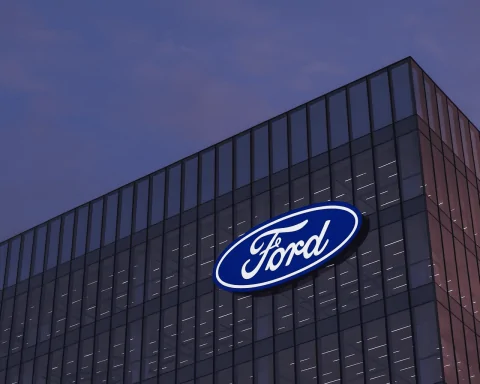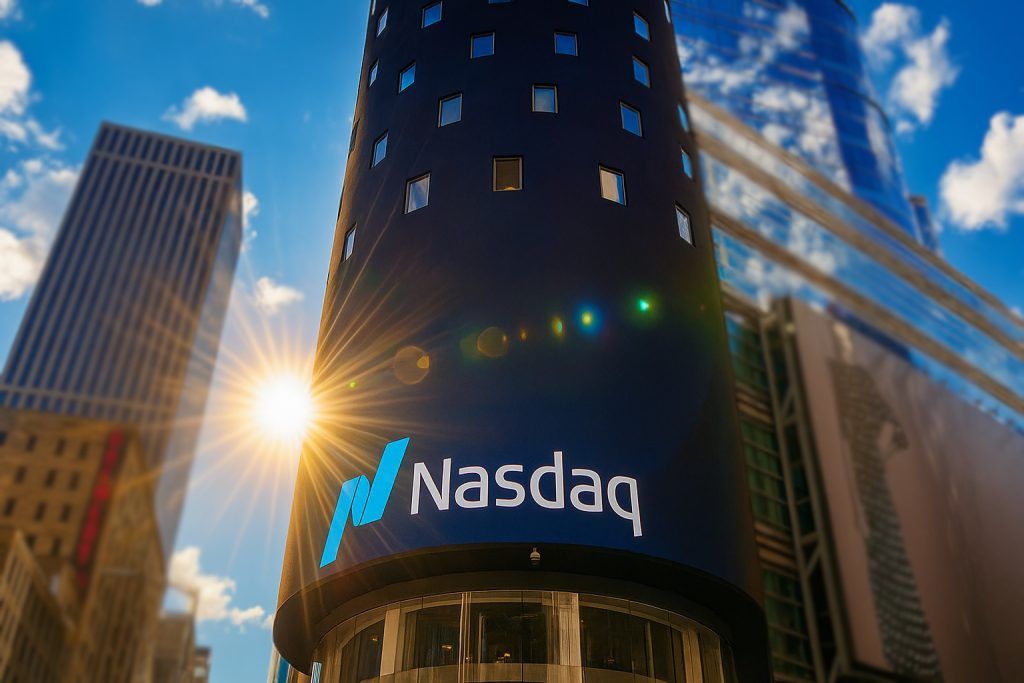Grab Holdings Limited (NASDAQ: GRAB) stock is back under pressure today, extending a sharp pullback that began after its early‑November earnings rally. As of midday U.S. trading on Friday, November 21, 2025, GRAB is changing hands just below $4.90, down roughly 2% on the session and trading in a wide intraday range between about $4.82 and $5.06 on heavy volume. [1]
That leaves the Southeast Asian super‑app more than 20% below its post‑earnings high near $6.20 earlier this month and hovering not far above its 52‑week low of around $3.36, well off the 52‑week high of $6.62. [2]
At the same time, Grab’s underlying business continues to show accelerating growth and improving profitability, and Wall Street still broadly expects upside over the next 12 months—even as regulatory and competitive risks pile up.
Below is a concise rundown of GRAB stock today, the latest fundamentals, and the key themes traders and long‑term investors are watching.
GRAB Stock Today: Price Action and Recent Slide
Intraday trading on November 21, 2025
- Price: Just under $4.90, down roughly 2% versus Thursday’s close around $4.98. [3]
- Day range: Roughly $4.82 – $5.06, showing elevated intraday volatility after Thursday’s 9% swing between the high and low. [4]
- Volume: Tens of millions of shares have already traded, but activity is running below Thursday’s 80M+ shares, when the stock dropped more than 6%. [5]
Data from StockInvest and other technical screens show that as of Thursday, November 20, GRAB had fallen for eight consecutive sessions, dropping from about $5.31 to $4.98 and losing over 11% in that span. [6] Today’s early decline puts the stock on pace to extend that losing streak, though the final verdict will depend on where shares close.
Over longer time frames, MarketBeat’s performance data paints a mixed picture:
- 1‑month performance: About ‑12%
- Year‑to‑date: Roughly +4%
- 1‑year: Around ‑13% [7]
With a market capitalization in the neighborhood of $20–21 billion, GRAB remains one of Southeast Asia’s largest listed tech platforms, but its share price is still well below the levels seen soon after its SPAC debut. [8]
Fundamentals: Q3 2025 Showed Real Progress
The selling pressure in GRAB stock stands in contrast to the company’s latest quarterly results, which were objectively strong.
Q3 2025 headline numbers
In its Q3 2025 earnings release, Grab reported: [9]
- Revenue:$873 million, up 22% year over year (17% in constant currency)
- On‑Demand GMV:$5.8 billion, up 24% YoY
- Operating profit:$27 million, a $65 million improvement from the prior year
- Net profit:$17 million
- Adjusted EBITDA:$136 million, +51% YoY
- Trailing‑12‑month adjusted free cash flow:$283 million, up $185 million versus a year ago
This marked Grab’s fifteenth consecutive quarter of sequential adjusted EBITDA improvement, underscoring a multi‑year pivot from “growth at any cost” toward profitable scale. [10]
Segment highlights
Grab’s business is split across mobility, deliveries, and financial services:
- Deliveries (GrabFood, GrabMart & ads)
- Revenue up 23% YoY to $465 million
- GMV up 26% YoY to $3.73 billion
- Segment adjusted EBITDA margin improved to 2.1% (from 1.8%), helped by ad monetization and operating leverage. [11]
- Mobility (ride‑hailing)
- Revenue up 17% YoY
- GMV up 20% YoY to about $2.04 billion
- Segment EBITDA margin at 8.9%, slightly higher than last year, even as average fares fell 7% YoY to improve affordability while driver earnings rose about 4%. [12]
- Financial Services (GrabFin & digibanks)
- Revenue up 39% YoY to $90 million
- Total loans disbursed up 56% YoY to $886 million
- Loan book up 65% YoY to $821 million, on track to exceed $1 billion by year‑end. [13]
Grab also ended the quarter with $7.4 billion in gross cash and $5.3 billion in net cash liquidity, providing a sizable buffer to fund growth, withstand downturns, and absorb regulatory or competitive shocks. [14]
Guidance: Raising the bar for 2025
On the back of Q3 momentum, management raised full‑year 2025 guidance:
- Group revenue: Now $3.38–$3.40 billion, up from $3.33–$3.40 billion
- Adjusted EBITDA: Now $490–$500 million, up from $460–$480 million [15]
Reuters and other outlets highlighted the beat‑and‑raise quarter as evidence that Grab’s “super‑app” model—spanning transportation, food and grocery delivery, and financial services—continues to gain traction even as consumer budgets come under pressure. [16]
So Why Is GRAB Selling Off?
If the numbers look good, why has GRAB been sliding?
Several factors appear to be weighing on sentiment:
- A small EPS ‘miss’ against high expectations
MarketBeat’s summary of the quarter notes that Grab delivered Q3 EPS of $0.01, missing the $0.03 consensus estimate, even as revenue slightly beat expectations. Net margin stood at about 3.8% and return on equity at roughly 1.9%. [17]
For a richly valued growth stock, even a modest earnings miss can trigger profit‑taking—especially after a strong run earlier in the year. - Valuation worries
Based on recent prices, Grab trades at a trailing P/E above 130x, with a price‑to‑sales multiple that the Business Times estimates is roughly 4.5x expected 2026 sales, compared with about 2.2x for Indonesian rival GoTo. [18]
Zacks previously graded Grab an “F” on value, arguing the stock trades at a premium to peer averages. [19] - Technical pressure and momentum traders exiting
Daily market commentary from technical sites notes GRAB has fallen in nine of the last ten sessions, with an eight‑day losing streak through Thursday and a cumulative drawdown of more than 11% over that period. [20]
Some traders who bought into the post‑earnings bounce near $6+ are locking in losses or moving to the sidelines, reinforcing the downward momentum. - “Financial restructuring” headlines and options activity
Trading blogs such as Timothy Sykes’ note that the stock’s sudden dips in recent days coincided with headlines about financial restructuring efforts and heavy options activity, which can magnify short‑term volatility. [21] - Institutional flows cutting both ways
Recent SEC‑filing round‑ups show that Prudential PLC reduced its stake in Grab by around 3.2%, while other large investors, including WFM ASIA BVI Ltd and Geode Capital Management, increased or maintained sizable positions. [22]
According to MarketBeat, roughly 55% of GRAB’s float is now held by institutions and hedge funds, amplifying the impact of big fund decisions on the share price. [23]
Analyst View: Still a “Moderate Buy” With Upside, but Not Without Doubts
Despite the pullback, Wall Street’s stance on GRAB remains broadly constructive—though not unanimously bullish.
Consensus ratings and targets
Because each data provider aggregates a slightly different analyst set, consensus numbers vary, but they tell a similar story:
- MarketBeat: Average rating “Moderate Buy” with a consensus 12‑month target of $6.25. [24]
- StockAnalysis: 8 analysts, “Buy” rating and an average target of $6.23 (range $4.90–$8.00). [25]
- MarketWatch: 29 ratings, overall “Buy” with an average target around $6.89. [26]
- TickerNerd: 11 Wall Street analysts, median target $6.90, calling the overall stance “Strong Buy.” [27]
- Markets Insider: 16 analysts, median target $5.49 (range $3.80–$7.00) with 15 Buy ratings and 1 Sell. [28]
- Public.com: 6‑analyst consensus labeled “Hold”, with a 2025 price forecast near $5.97. [29]
Taken together, most compilations cluster average/median targets in the mid‑$6s, implying roughly 25–40% upside from today’s sub‑$5 price—if the company hits current growth and profitability expectations. There is, however, at least one Sell rating on record, reflecting concerns about competition and valuation. [30]
Analyst notes from Benchmark, Barclays, Jefferies, Mizuho, and others have recently nudged price targets up to $7, citing “robust” Q3 metrics and the prospect of sustained growth into FY26. [31]
Big Story #1: The Potential Grab–GoTo Mega‑Merger and “Golden Share”
Arguably the most important medium‑term narrative around GRAB stock right now isn’t just earnings—it’s M&A and regulation.
A $29 billion ride‑hailing champion?
Multiple reports from the Financial Times, Reuters, and regional outlets say Grab and Indonesian rival GoTo are in advanced talks over a potential $29 billion merger, which would combine Southeast Asia’s two dominant ride‑hailing and food‑delivery platforms. [32]
Key points:
- A merged Grab–GoTo group could control over 90% of Indonesia’s ride‑hailing and food‑delivery market. [33]
- Indonesia’s new sovereign wealth fund Danantara is in discussions to take a minority “golden share” in the combined entity, giving it special veto rights over sensitive issues such as driver pay and local operations. [34]
- Indonesia’s government, which had previously resisted a deal, is now reported to be supportive in principle, though any transaction would still face intense antitrust and labor scrutiny. [35]
Analysts note that investors currently value Grab at a significantly higher sales multiple than GoTo, which could give Grab an advantage in a stock‑based deal but also raises questions about how much dilution GRAB shareholders might face and what level of state influence will be acceptable. [36]
For GRAB stock, the merger talk cuts both ways:
- Bullish interpretation: A successful merger could consolidate market share, reduce cut‑throat price competition in Indonesia, and eventually boost profitability across mobility and delivery.
- Bearish interpretation: Political risk rises if a sovereign wealth fund wields veto power. Any perceived cap on pricing power or driver‑pay flexibility could pressure margins, and regulators across the region may insist on concessions.
Big Story #2: Autonomous Vehicles and the “Ai.R” Pilot
Grab is also pushing into autonomous mobility, another theme investors are tracking closely.
Earlier this month, Singapore’s Land Transport Authority approved Grab and Chinese AV specialist WeRide to expand testing of their Ai.R autonomous shuttle fleet in the Punggol district. The partners plan to quadruple the number of AV test runs by year‑end, with public passenger service targeted for early 2026. [37]
The Ai.R service will connect residential areas to key amenities such as the Punggol Coast MRT station, bus interchanges, malls and clinics, with on‑board safety operators during the trial phase. [38]
For investors, this matters because:
- It showcases Grab’s ambition to stay at the cutting edge of mobility tech, countering the narrative that it’s just a traditional ride‑hailing company.
- Autonomous shuttles could, over time, reduce driver‑related costs, though in the near term they require significant capital and regulatory engagement.
- The pilot adds another layer of execution risk, especially if public adoption is slower than hoped or if regulators tighten safety rules after any incidents.
Financial Snapshot: Balance Sheet and Liquidity
From a balance‑sheet standpoint, Grab looks relatively well‑positioned:
- Net cash: Roughly $5.3 billion
- Gross cash liquidity: About $7.4 billion
- Debt‑to‑equity ratio: Around 0.05
- Quick ratio / current ratio: Both near 1.8x, indicating ample short‑term liquidity. [39]
Those numbers give Grab flexibility to:
- Continue investing in deliveries, mapping, advertising, financial services, AV and remote‑driving tech
- Absorb regulatory or competitive shocks in key markets such as Indonesia, Singapore, Vietnam and Thailand
- Potentially participate in or finance a large transaction like the GoTo merger, if it ultimately materializes
However, with trailing net margins still in the low‑single digits and a high earnings multiple, the market is clearly assuming that profitability continues to scale from here. [40]
Key Risks Investors Are Watching
Whether you’re bullish or cautious on GRAB, several risk factors are central to the story:
- Regulation and political involvement
- The mooted golden share for Indonesia’s Danantara fund would bring the state directly into strategic decision‑making if the GoTo merger goes ahead. [41]
- Governments across Southeast Asia are increasingly focused on gig worker protections, data governance and competition policy, which could limit pricing flexibility over time.
- Competition and pricing power
- Even without a merger, Grab faces stiff competition from GoTo in Indonesia and from other platforms (including Sea Group’s ecosystem and local players) across the region. [42]
- Recent quarters show Grab deliberately lowering average mobility fares to drive volume, while trying to keep driver earnings up—a balancing act that could pressure margins if macro conditions weaken. [43]
- Credit and fintech risk
- Financial services are one of Grab’s fastest‑growing segments, with a rapidly expanding loan book exceeding $800 million and expected to pass $1 billion by year‑end. [44]
- While this adds a new revenue stream and deepens the ecosystem, it also introduces credit‑quality and regulatory risks that traditional ride‑hailing didn’t have.
- Valuation & volatility
- With a trailing P/E north of 130x and a premium sales multiple versus GoTo, Grab leaves less room for error if growth slows or if merger/regulatory headlines turn negative. [45]
- The recent eight‑day losing streak illustrates how quickly sentiment can swing in a stock widely held by institutions and targeted by short‑term traders. [46]
How Some Investors May Be Framing GRAB Stock Today
This section is for general information only and not personalized financial advice.
Given today’s setup, different types of market participants might be thinking about GRAB in very different ways:
- Growth‑oriented investors may focus on:
- Double‑digit revenue and GMV growth across deliveries, mobility and fintech
- Rising profitability and upgraded EBITDA guidance
- Optionality from AV pilots, mapping/ads, and a potential GoTo combination
- A balance sheet with billions in net cash
- More cautious or value‑focused investors may highlight:
- High valuation multiples relative to current earnings
- Ongoing competitive and regulatory uncertainty in Indonesia and across ASEAN
- The possibility that any Grab–GoTo merger could be structured in a way that dilutes existing shareholders or constrains margins due to state influence
- Elevated share‑price volatility and recent technical weakness
If you are considering GRAB, it’s important to:
- Look beyond today’s price action and read the full Q3 2025 earnings release and prepared remarks. [47]
- Follow official updates on potential merger and regulatory developments, especially from Grab’s investor relations site and reputable outlets like Reuters and the Financial Times. [48]
- Evaluate how GRAB fits your own risk tolerance, time horizon and diversification needs, ideally in consultation with a qualified financial adviser.
Bottom Line on GRAB Stock for November 21, 2025
On November 21, 2025, GRAB stock is:
- Trading just under $4.90, down roughly 2% on the day and about 20%+ below its early‑November highs
- Backed by solid Q3 results—22% revenue growth, improving margins and rising free cash flow
- Still rated a “Moderate Buy” to “Buy” by many analysts, with average price targets generally in the mid‑$6s
- Caught in the cross‑currents of regulatory risk, a potential $29 billion mega‑merger with GoTo, and a higher‑than‑average valuation that leaves little room for disappointment
Whether the current weakness proves to be a healthy reset after an exuberant run, or the start of a deeper re‑rating, will likely depend on three things in the coming months: clarity on the GoTo deal, the durability of Grab’s profitability ramp, and how regulators across Southeast Asia choose to shape the ride‑hailing and gig‑economy landscape.
Important Disclaimer
This article is for informational and educational purposes only and does not constitute investment, financial, tax, or legal advice. It is not a recommendation to buy, sell, or hold any security, including Grab Holdings Limited (GRAB). Always do your own research and consider consulting a licensed financial professional before making investment decisions.
References
1. www.investing.com, 2. www.marketbeat.com, 3. www.marketbeat.com, 4. www.investing.com, 5. www.marketbeat.com, 6. stockinvest.us, 7. www.marketbeat.com, 8. www.marketbeat.com, 9. www.grab.com, 10. www.grab.com, 11. www.grab.com, 12. www.grab.com, 13. www.grab.com, 14. www.grab.com, 15. www.grab.com, 16. www.reuters.com, 17. www.marketbeat.com, 18. www.marketbeat.com, 19. finviz.com, 20. stockinvest.us, 21. www.timothysykes.com, 22. www.marketbeat.com, 23. www.marketbeat.com, 24. www.marketbeat.com, 25. stockanalysis.com, 26. www.marketwatch.com, 27. tickernerd.com, 28. markets.businessinsider.com, 29. public.com, 30. markets.businessinsider.com, 31. www.tipranks.com, 32. www.reuters.com, 33. www.reuters.com, 34. www.reuters.com, 35. www.reuters.com, 36. www.businesstimes.com.sg, 37. markets.businessinsider.com, 38. markets.businessinsider.com, 39. www.grab.com, 40. www.marketbeat.com, 41. www.reuters.com, 42. thediplomat.com, 43. www.grab.com, 44. www.grab.com, 45. www.marketbeat.com, 46. stockinvest.us, 47. www.grab.com, 48. investors.grab.com








